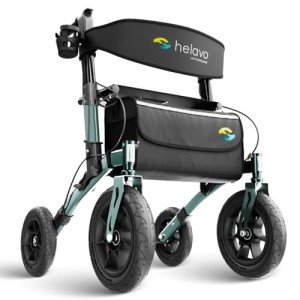How Much Can Stable Walker Experts Make?
Exploring the Innovations of Stable Walker Technology
In the ever-evolving world of robotics and automation, the principle of a “stable walker” has actually emerged as an interesting intersection of design, technology, and biomechanics. A stable walker describes a robotic system efficient in keeping balance and passing through various surfaces, imitating human-like movement. This blog site post supplies an in-depth expedition of stable walkers, their components, applications, and the technological developments that continue to push the limits of what these makers can accomplish.
- * *
What Makes a Walker “Stable”?
At its core, stability in a robotic walker is specified by its capability to stay upright and navigate a range of surface areas without falling. A number of elements add to a walker's stability:
- Center of Gravity: A lower center of mass usually enhances stability. Designers often position elements tactically to enhance this aspect.
- Sensors: Advanced sensors help the walker detect modifications in the environment, enabling real-time modifications to maintain balance.
- Actuators: These elements allow movement and play a vital role in steady navigation.
- Algorithms: Sophisticated algorithms process sensing unit data and identify the best motions, enabling adaptive walking.
- * *
Table 1: Key Components of Stable Walkers
Component
Function
Sensors
Find environmental conditions and assist in balance
Actuators
Propel movement in numerous instructions
Control Systems
Incorporate sensor input to make real-time balance adjustments
Power Supply
Offer essential energy for functions and motion
- * *
Applications of Stable Walkers
The applications of stable walkers are large and differed, spanning numerous fields. Below are some key locations where these innovations are making an impact:
Healthcare:
- Rehabilitation: Stable walkers can assist patients recovering from injuries or strokes by supplying support while they restore their mobility.
- Exoskeletons: Wearable robotic gadgets can aid people with mobility disabilities, enabling them to stroll once again.
Search and Rescue Operations:
- Unmanned stable walkers can browse tough surfaces during search operations after natural catastrophes. They are vital in reaching locations that are unattainable to humans or wheeled lorries.
Elderly Assistance:
- Robotic walkers designed for the elderly can assist preserve independence by using support for motion and navigation around the home.
Industrial Applications:
- In settings where heavy loads need to be transported, stable walkers can assist workers by bring products without the threat of losing balance.
- * *
Table 2: Applications of Stable Walkers
Application Area
Use Case Description
Healthcare
Rehab support and exoskeletons for mobility
Search & & Rescue
Browsing disaster-struck areas for recovery operations
Elderly Assistance
Supporting mobility for elderly people
Industrial
Carrying heavy loads in complicated environments
- * *
Technological Advancements
Robotic walkers have advanced substantially over the past few years due to improvements in numerous critical locations:
- Sensor Technology: Enhanced sensing units such as LiDAR, ultrasonic, and cams provide detailed environmental mapping, enabling walkers to make more informed choices on the relocation.
- Expert System (AI): AI and maker knowing algorithms assist in better forecast designs for movement, making it possible for robotic walkers to find out from their experiences and improve in time.
- Battery Life: The development of lighter, more efficient battery innovations guarantees that stable walkers can run longer with less frequent charging.
- Products Science: Innovations in products, such as lightweight composites, boost the sturdiness and performance of robotic walkers.
- * *
Difficulties Facing Stable Walkers
Regardless of the exciting advances in stable walker technology, numerous obstacles stay. A few of these consist of:
- Complex Environments: Navigating unpredictable terrains is still a considerable difficulty for most walkers.
- Expense and Accessibility: Many advanced robotic walkers are costly, restricting their accessibility to a wider audience.
User Adaptation: Training users to successfully operate or adapt to robotic walkers is essential, particularly in health care applications.
- *
Frequently Asked Questions (FAQ)
1. Can stable walkers be used outdoors?Yes, lots of stable walkers are developed to operate in numerous outdoor conditions, with features to traverse uneven surface.
2. How do stable walkers differ from traditional wheelchairs?Stable walkers provide active support, enabling mobility and movement similar to walking, whereas wheelchairs offer seated assistance without enabling walking movement.
3. Are stable walkers safe for older grownups?Yes, they can substantially enhance the safety of older adults by offering stability and decreasing the risk of falls. However, users ought to be trained on their correct use.
4. What is the future of stable walker technology?The future points towards more autonomous systems utilizing advanced AI, allowing walkers to make choices in real-time and adjust to user preferences and environments.
- * *
The expedition of stable walker technology discovers a remarkable world loaded with capacity. Walking Aid advanced makers mix engineering, artificial intelligence, and human-centered design to attend to critical obstacles in mobility and accessibility. With ongoing advances set to additional fine-tune their capabilities, stable walkers represent a key development with the guarantee to change how individuals move and communicate with their environments. Whether in healthcare facilities, disaster zones, or homes, the effect of stable walkers continues to grow, improving lives and supplying support in manner ins which were as soon as believed impossible.
As innovations evolve and the combination of AI and efficient products continues, the future of stable walkers seems not only promising but essential in advancing human mobility and independence.
